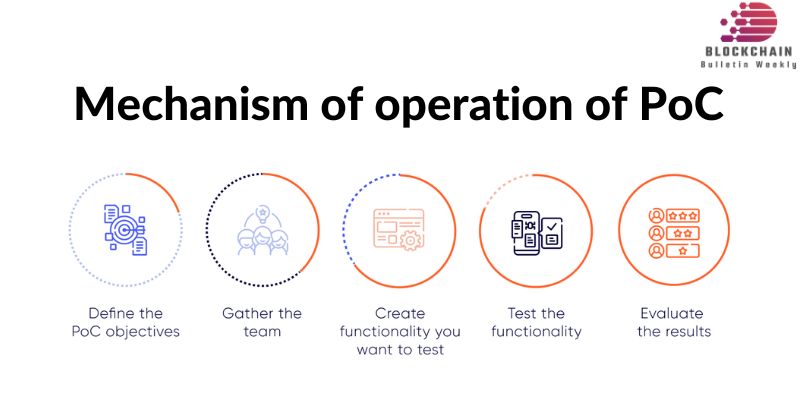The mechanism of operation of PoC (Proof of Concept) plays a pivotal role in blockchain technology, offering a unique approach to validating transactions and resources. By understanding the intricate workings of this system, we can better appreciate its impact on network security, efficiency, and reliability. This article explores the key components of PoC, shedding light on how it operates and influences the decentralized ecosystem.
Definition of POC in Blockchain
A Proof of Concept (PoC) is a testing mechanism used to validate an idea or solution before fully implementing it. It allows developers and projects to experiment with new technologies or models on a small scale, ensuring they work effectively in real-world conditions.
PoCs are commonly used to assess the security, scalability, and overall functionality of a blockchain system before rolling it out on a larger scale. They are typically small-scale experiments that require minimal resources and have a limited scope, which helps reduce financial and technical risks. PoCs also provide an opportunity to measure key factors like performance, processing speed, and security, offering valuable insights into how the system would perform when fully deployed.
One of the main advantages of a PoC is its flexibility. The components can be adjusted or modified without impacting the broader system, allowing developers to fine-tune their approach. Additionally, PoCs help demonstrate the novelty or superiority of a new solution, making it easier to convince stakeholders of its value.
Mechanism of operation of PoC – Proof of Resource
Proof of Concept (PoC) in blockchain, specifically Proof of Resource, focuses on testing the efficient use of resources before full-scale deployment. It starts by identifying necessary resources, such as computing power, bandwidth, and storage, to ensure the system can function properly.
During testing, developers aim to optimize resource usage, ensuring performance, speed, and security without wasting resources.
PoCs also evaluate whether the allocated resources are effective, allowing components like nodes to function stably. They assess sustainability by checking if the system can maintain resource management over time, especially in decentralized systems. Finally, PoCs test scalability, ensuring the system can handle growth in users and transactions.
Overall, PoC helps ensure that blockchain systems can run efficiently, manage resources well, and scale for future growth.
Mechanism 2 – Proof of Capacity
Proof of Capacity (PoC) is a blockchain consensus mechanism that uses storage space instead of computational power. Participants prepare their nodes by storing data, called “plotting,” on their hard drives. This data is used to solve consensus puzzles, and the node with the best match validates the next block.
PoC is more energy-efficient than Proof of Work (PoW) since it doesn’t require constant computation, only maintaining storage. It also enhances decentralization and security, as many nodes with different storage capacities can participate. The system is scalable, as nodes can simply add more storage, and the plotted data can be reused, saving resources.
In short, PoC offers an efficient, eco-friendly, and scalable consensus model by utilizing storage capacity.
Mechanism 3 – Performance and Reliability Evaluation
Proof of Capacity (PoC) offers excellent performance and reliability for blockchain systems. Unlike Proof of Work (PoW), PoC uses storage instead of constant computations, making it more stable over time. Nodes prepare data once and can reuse it, reducing energy use and avoiding frequent hardware upgrades.
PoC is also highly reliable, as it reduces the risk of errors during mining. The pre-stored data prevents system overloads and ensures accurate transactions. Additionally, PoC is scalable—new nodes can simply add more storage as the network grows, avoiding congestion and performance issues.
With fault tolerance and strong security, PoC reduces the risk of failures since nodes don’t need continuous complex calculations. Modern storage technologies also help protect data integrity. PoC is cost-effective, using less energy than PoW and allowing more people to participate without needing specialized hardware.
Overall, PoC balances performance with sustainability, offering a flexible and reliable solution for blockchain systems.
The mechanism of operation of PoC presents a compelling alternative to traditional consensus mechanisms. By leveraging storage capacity, PoC offers enhanced scalability, energy efficiency, and security. As explored in this analysis, and further detailed in Blockchain Bulletin Weekly, this innovative approach is poised to play a significant role in shaping the future of blockchain technology.

